Stone Restoration and Maintenance Corner – Specialize, or Be a “Jack-of-All Hard Surfaces”?
Bob Murrell
M3 Technologies
Photos by Bob Murrell
I believe it was Elon (and you know who I mean) who said that we tend to try and optimize processes and procedures to a point where it actually has the opposite effect. In the natural stone, terrazzo, and decorative concrete restoration and maintenance industry, most of the basic processes and procedures have been around for thousands of years. These products and procedures have been and continue to be optimized. The big leap was back in the late 1960s with the introduction of the industrial diamond, which has widespread use today in our industry.
We take surfaces that need to be repaired and, through a smoothing and rubbing process, we refinish to like new, or better than new, in most cases. Stone, and for that matter many hard surfaces, are finished in multiple steps of honing (smoothing with abrasives) processes to the desired level of finish. Remember, we basically have 3 types of surface finishes for stone: polished, honed (this is a range of varying smoothness and shine), and textured (meaning rough or three-dimensional).
These procedures are virtually the same for marble, granite, quartz, quartzite, travertine, limestone, slate, terrazzo, decorative concrete, and most all natural stone. All of these materials are cut or cast and then finished to the desired level, whether that be a leathered or antiqued (textured) dimensional finish, honed (smooth with a matte to satin shine) finish, or a highly polished (smooth with high light reflectivity) finish.
As I previously stated, these materials are finished in much the same way. However, there are some differences in the tooling and procedure with various materials. In the stone restoration and related services, we typically use diamond abrasives (in both metal-bond & resin-bond), sometimes silicon carbide (sandpaper and bricks), aluminum oxide (in many polishing powders), tin oxide (a premium polishing abrasive used for granite and most all polishable stone), and a few others.
Now, most contractors usually keep in stock what tools they use the most often. If you’re mostly, or even only, polishing marble countertops, you’re probably going to have plenty of variable-speed hand polishers, 5 inch flexible resin diamonds, Majestic 5X Gold Marble Polishing Powder or Marble Polishing Compound, Tape & Drape, blue tape, red polyvinyl tape, Majestic Low Odor Solvent-Based Sealer, PLP diamond impregnated pads, and generally the tools necessary to hone and polish marble countertops, right?
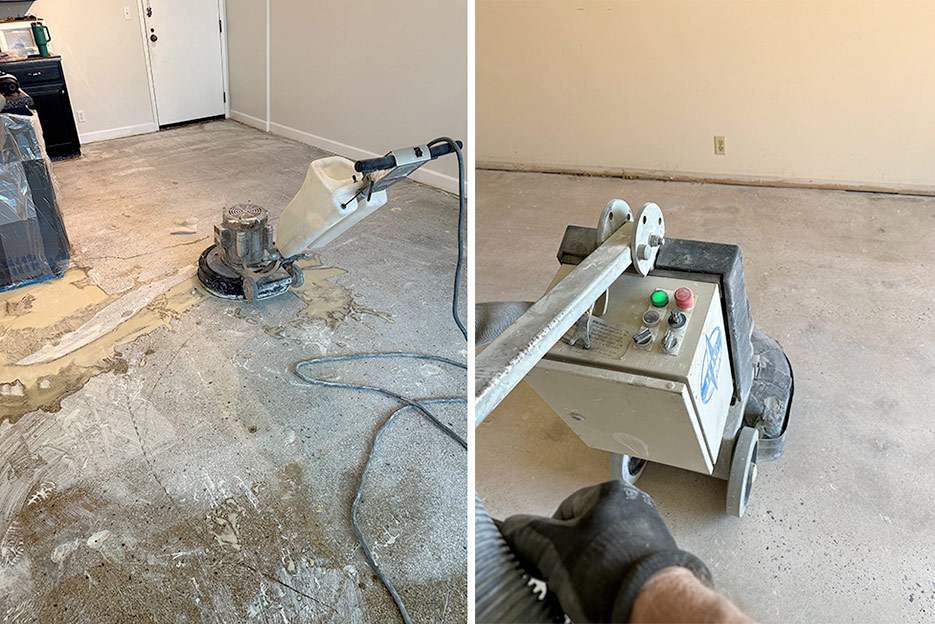 |
|
Left: Residential terrazzo – Oh boy! Better be prepared to tackle layers of old carpet glue removal and more, before you can hone and polish terrazzo. Right: So, you want to do concrete, eh? You better stock up on heavy equipment and metal bond diamonds! |
If you’re grinding, honing, and/or polishing concrete floors, you’re probably going to have planetary floor machines and plenty of metal-bond discs like our popular Magnums (8 segment and 3 segment) series. You’ll also need plenty of resin (either phenolic or epoxy type) to finish out the floor. If you’re doing “surface prep” work, which is coatings removal, you’ll want plenty of 3 segment Magnums for greater down pressure (psi) and a better scraping effect. You can use our Flexible Electroplate Metal-Bond and Premium Flexible Resin diamonds for doing the hand tool work on edges and where necessary, which is convenient as both can also be used on most all stone, terrazzo, and concrete.
The bottom line is this: the more different types of surfaces and markets you work in, the more types of tooling and consumables you will need, not to mention the different types of equipment needed for these surfaces and applications. If your niche is marble and limestone countertops, you will not necessarily have the equipment or tooling on hand to do surface prep on concrete floors.
In one of my recent articles, I discuss how hard it was to remove carpet adhesive, tile thinset, and other coatings from concrete floors in an apartment building high-rise. The clients wanted a semi-polished and stained floor. This surface prep project was no easy feat, and if I had not already had an HTC 500 machine and some tooling from years past, there is absolutely no way that project could have been completed efficiently, or for that matter, with a profit.
To go purchase that equipment and tooling new would have cost over $15K, at least. This doesn’t even take into account the experience needed to run this heavy grind and polish on such a battlefield — and trust me, it was a battle.
Many different scenarios can be similar to an easy and common marble hone and polish job (other than lippage removal). Terrazzo is a perfect example. It is basically marble with no lippage or at least very little, except for settling cracks with upheavals. Of course, travertine is another common calcium-based stone that needs restoration periodically. These materials usually involve cut and dried procedures. They are the bread and butter of most restoration professionals. And, depending on the complexity of the specific project, are an “easy” way to make a dollar.
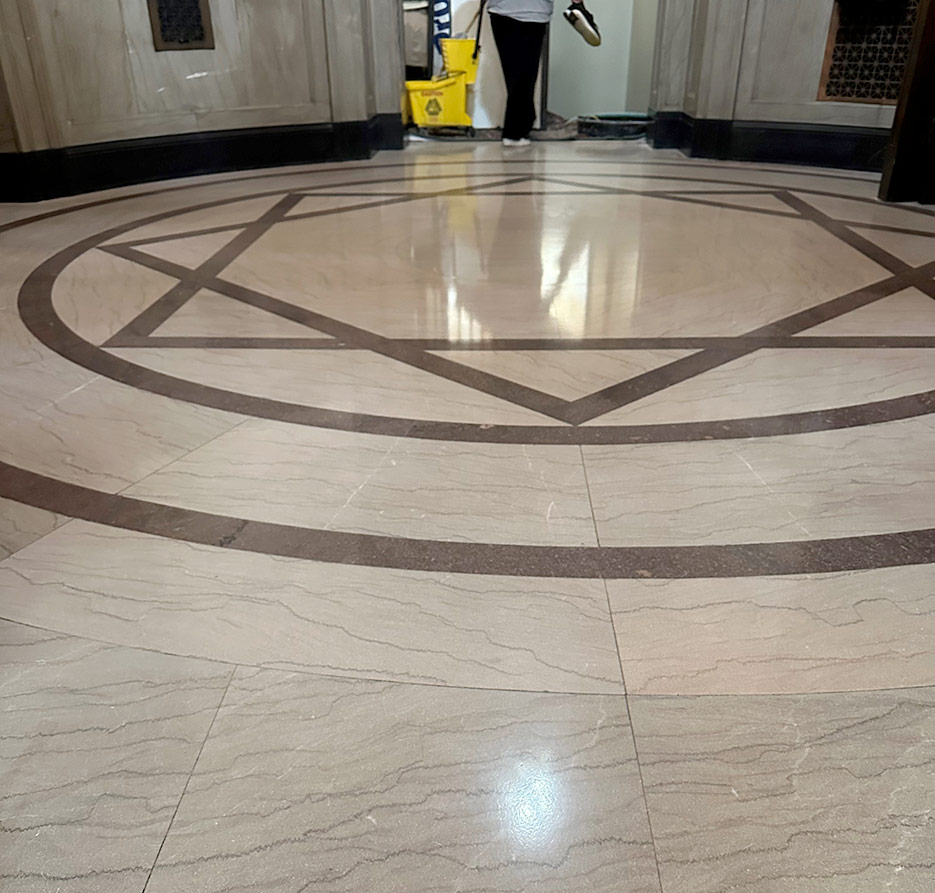 |
|
Above: Commercial marble? No problemo! Below: Ah yes, refinishing residential marble countertops... The sweet life. LOL! |
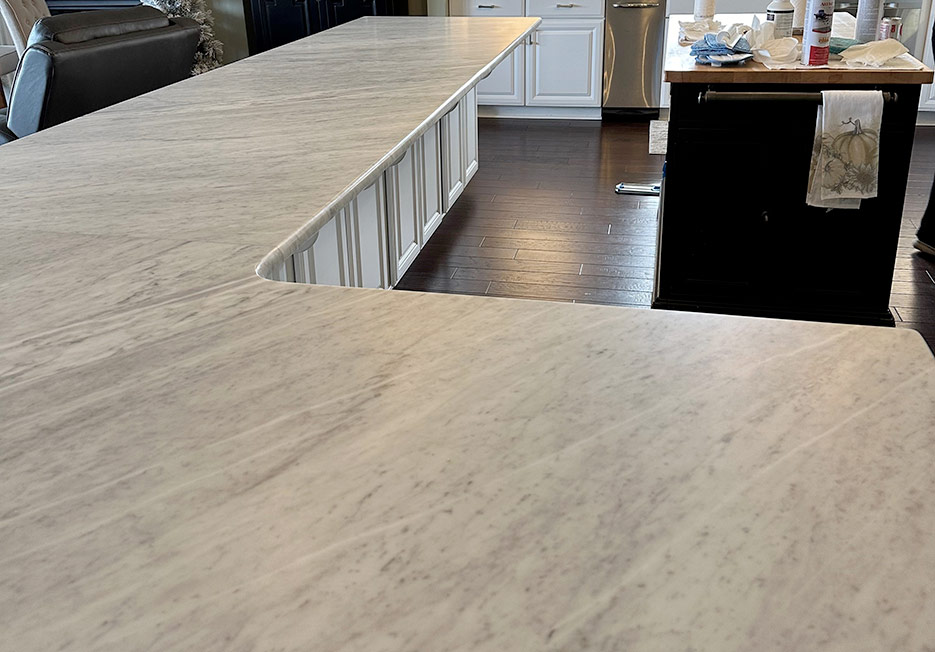 |
However, if you want to start doing granite, slate, Crab Orchard sandstone, ceramic tile, decorative concrete, Corian, engineered stones like quartz, and others, you will have to invest in the equipment, tools, chemicals, and training or learning time necessary to complete these projects. I don’t think any experienced restoration contractor should be intimidated by these surfaces. However, I also wouldn’t recommend learning how to do Absolute Black granite on someone’s countertop, either. Just sayin’…
So maybe you want to specialize in countertops, marble only, concrete, terrazzo. To do it all, you will need the right equipment, tooling, and experience to get it done, with as few problems as possible. Oh, and there will be problems, trust me. Some contractors prefer to do only residential projects and others prefer commercial. It’s all good, just a little different.
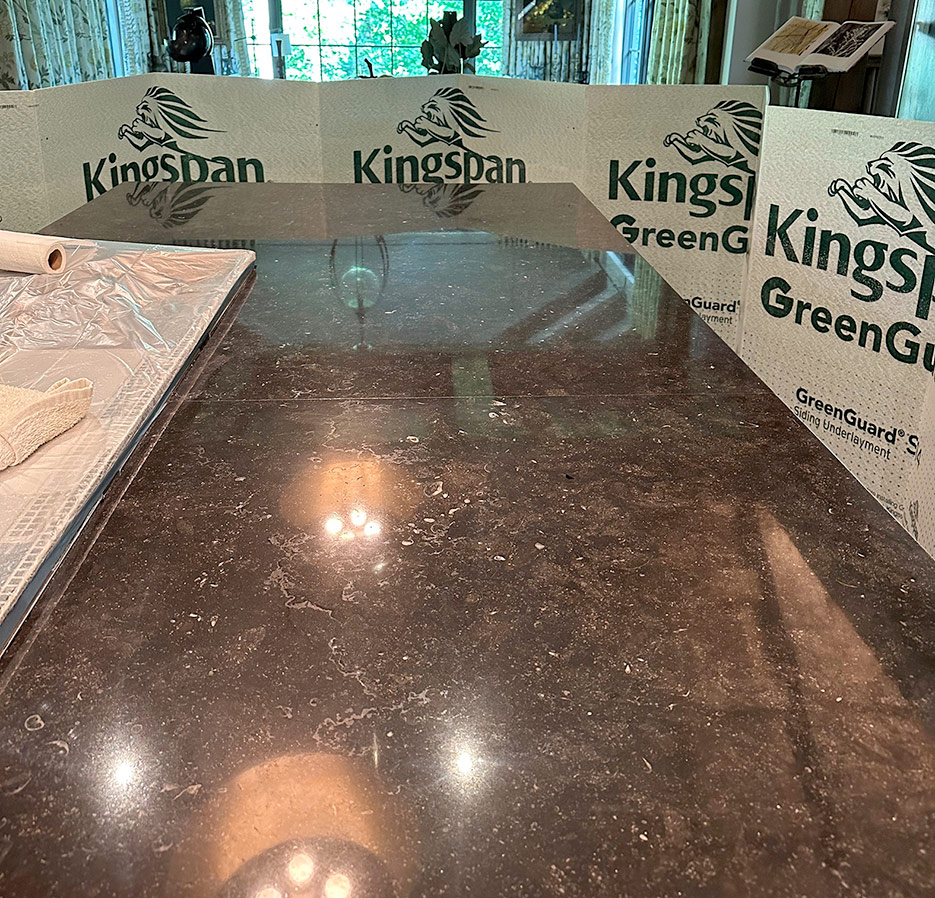 |
|
Above: If you’re prepared to work on darker marble – know that it can be less forgiving, so your refinishing must be close to perfect! Below: Even driveway sealing can be on the list, if you’re prepared with the right equipment to do-it-all. |
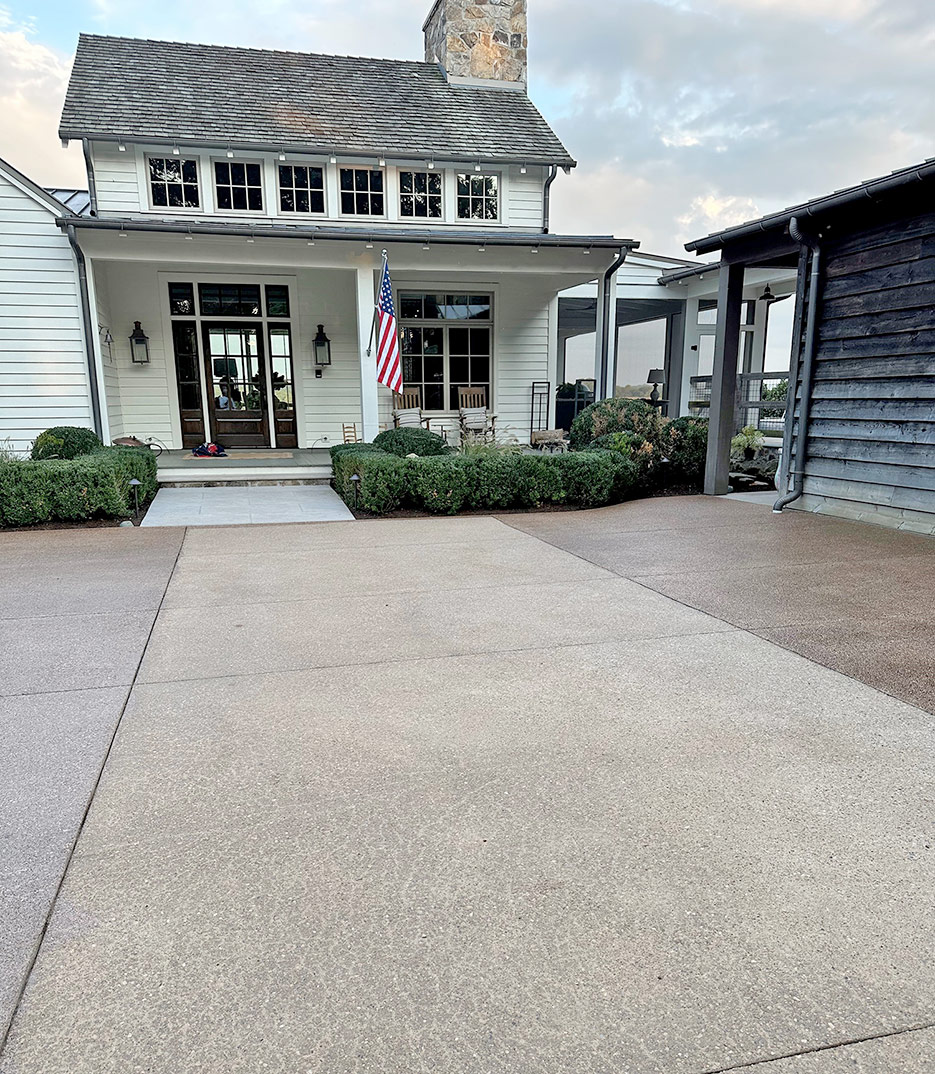 |
I always recommend doing a test area on any project to confirm both the results and procedure. Also, the best way to help ensure success is by partnering with a good distributor, like BB Industries, that knows the business. They can help with technical support, product purchase decisions, logistics, and other pertinent project information.
Bob Murrell has worked in the natural stone industry for over 40 years and is well known for his expertise in natural stone, tile, and decorative concrete restoration and maintenance. He helped develop some of the main products and processes which revolutionized the industry, and is currently the Director of Operations for M3 Technologies. Send your comments and questions to Bob at attn: publisher@slipperyrockgazette.net .